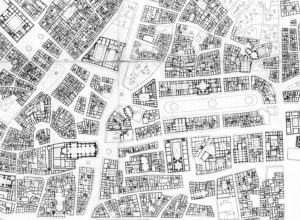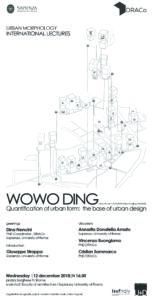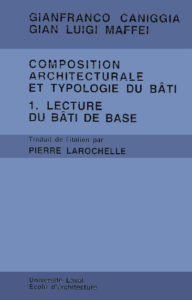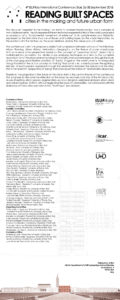BIBLIOTHECA ORIENTALIS ATTILIO PETRUCCIOLI AND THE ISLAMIC ENVIRONMENTAL DESIGN RESEARCH CENTRE – TRANI
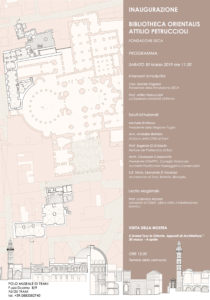
The Library holds about 11,900 volumes and it is specialized in architecture and urban planning in Asia and Africa, including several rare pieces. Its specialization and concentration of texts on the architecture of Islamic and Eastern countries make it unique. It is the only European specialised library in this field and its extensive collection is comparable only to the Rotch Library of the Massachusetts Institute of Technology in Cambridge, MA, USA.
The Library is part of the foundation SECA and is open to the public. It provides support to researchers in Puglia and is a centre for international scholarship, fostered by a consolidated network of relations with research and scientific institutions in Islamic countries.
The Library comprises:
Bibliographic sections: History of Islamic architecture and urban planning, Restoration and design in developing countries, Maghreb, Egypt, Southern Italy and colonies, Middle East, Iran, Central Asia, Ottoman Empire, India, Southeast Asia, China and Japan, Landscape, Typological Characteristics of Architecture, Theory and History of Architecture, Architectural Treatises.
Cartographic archive: geographical maps, cadastral maps, original architectural surveys (mostly on DVD) and the complete collection of the Tuebinger Atlas des Vorderen Orient.
Photographic archive: more than 20,000 slides and 1,000 negatives of buildings, cities and landscapes of Islamic countries, including historical images of sites now disappeared.
The Library is 45 years old and since the foundation its scientific operating branch, named Islamic Environmental Design Research Center, has been regularly promoted knowledge and cultural exchange, organising 12 international conferences and after relocating to Trani, in support of the research activities of the Politecnico di Bari, Faculty of Architecture, 10 symposia and international conferences. Since 2000 the Library has provided scientific and research support to more than 200 degree theses of the Politecnico di Bari, Faculty of Architecture, dedicated to the architecture of Islamic countries.
From 1983 to 2001 the library and the Islamic Environmental Design Research Centre published monographic issues of the:
Journal of the Islamic Environmental Design Research Centre. Chief Editor Attilio Petruccioli and it is now resuming the publication in the new location.
Objectives
Within the SECA Foundation the Bibliotheca Orientalis Attilio Petruccioli and the Islamic Environmental Design Research Centre involve a large number of cooperating citizens, in person or remotely, and establish working connections with a large number of people in the wide field of cultural production. In a time of profound changes in the political, cultural and economic spheres of the Mediterranean, resuming support to research activities in Puglia and attracting scholars, within a network of scientific institutions of Islamic countries, favours access to culture by means of new technologies and licenses, and creates a culturally and economically sustainable model for the horizontal widespread, and participatory production of Culture. As a cultural garrison in the heart of the historic city centre, the Library contributes to make Trani, and Puglia a bridge between the Western world and the Orient.
Users
The Library’s primary purpose is the conservation, acquisition and dissemination of bibliographic and documentary heritage, in support to the teaching and research needs of students, researchers and teachers. Activities are organised, also in cooperation with other institutions, and supported by adequate librarian and computer science technologies.
Facilities available:
- Reading and study spaces
- Design and research laboratories
- Resources for online research
- Professional training master’s programs
- Multimedia classrooms for national and international conferences
- Co-working areas
